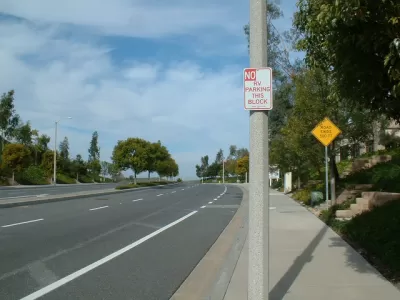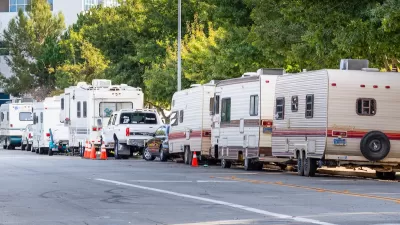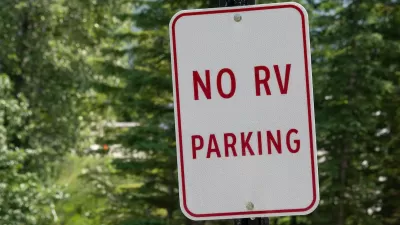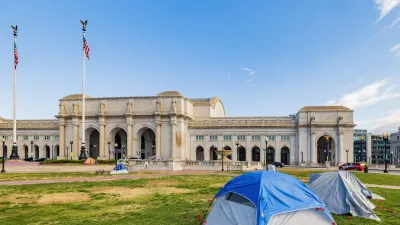Coastal cities are taking a no-tolerance approach to RVs on their streets, even as they otherwise strive to mitigate and prevent homelessness.

Although policies aimed at punishing or pushing out homelessness have long been decried by advocates, many cities are still—or even increasingly—pursuing them, according to journalist Kate Wheeling. In Pacific Standard, Wheeling highlights the problem as it manifests in Santa Barbara, California—where more than one-third of homeless residents live in RVs, and where "decades of cat-and-mouse games with city officials have made it nearly impossible for RV dwellers to find a place to park their homes."
Many cities justify RV bans with the untested assumption that parked RVs will lead to accidents by blocking drivers' line of sight. But some, including Santa Cruz and Los Angeles, have seen their bans overturned by lawsuits or by the state Coastal Commission for specifically targeting homeless people. Of Santa Barbara's ban, for example, Wheeling writes:
In the fall of 2016, a fed-up city council took more comprehensive action, voting unanimously to pass an ordinance banning on-street parking citywide for all oversized vehicles more than 25 feet long, 80 inches wide, or 82 inches tall. Unless, of course, that oversized vehicle is a government or utility vehicle, a contractor's pick-up, a commercial delivery truck, or a resident's or tourist's RV with the proper temporary permit. In other words, the new ordinance, which will go into effect in September, may not explicitly or exclusively describe RVs like Linda's, but no one is under any illusions about who the intended target is.
FULL STORY: DRIVEN OUT

Alabama: Trump Terminates Settlements for Black Communities Harmed By Raw Sewage
Trump deemed the landmark civil rights agreement “illegal DEI and environmental justice policy.”

Study: Maui’s Plan to Convert Vacation Rentals to Long-Term Housing Could Cause Nearly $1 Billion Economic Loss
The plan would reduce visitor accommodation by 25% resulting in 1,900 jobs lost.

Why Should We Subsidize Public Transportation?
Many public transit agencies face financial stress due to rising costs, declining fare revenue, and declining subsidies. Transit advocates must provide a strong business case for increasing public transit funding.

Paris Bike Boom Leads to Steep Drop in Air Pollution
The French city’s air quality has improved dramatically in the past 20 years, coinciding with a growth in cycling.

Why Housing Costs More to Build in California Than in Texas
Hard costs like labor and materials combined with ‘soft’ costs such as permitting make building in the San Francisco Bay Area almost three times as costly as in Texas cities.

San Diego County Sees a Rise in Urban Coyotes
San Diego County experiences a rise in urban coyotes, as sightings become prevalent throughout its urban neighbourhoods and surrounding areas.
Urban Design for Planners 1: Software Tools
This six-course series explores essential urban design concepts using open source software and equips planners with the tools they need to participate fully in the urban design process.
Planning for Universal Design
Learn the tools for implementing Universal Design in planning regulations.
Smith Gee Studio
Alamo Area Metropolitan Planning Organization
City of Santa Clarita
Institute for Housing and Urban Development Studies (IHS)
City of Grandview
Harvard GSD Executive Education
Toledo-Lucas County Plan Commissions
Salt Lake City
NYU Wagner Graduate School of Public Service





























